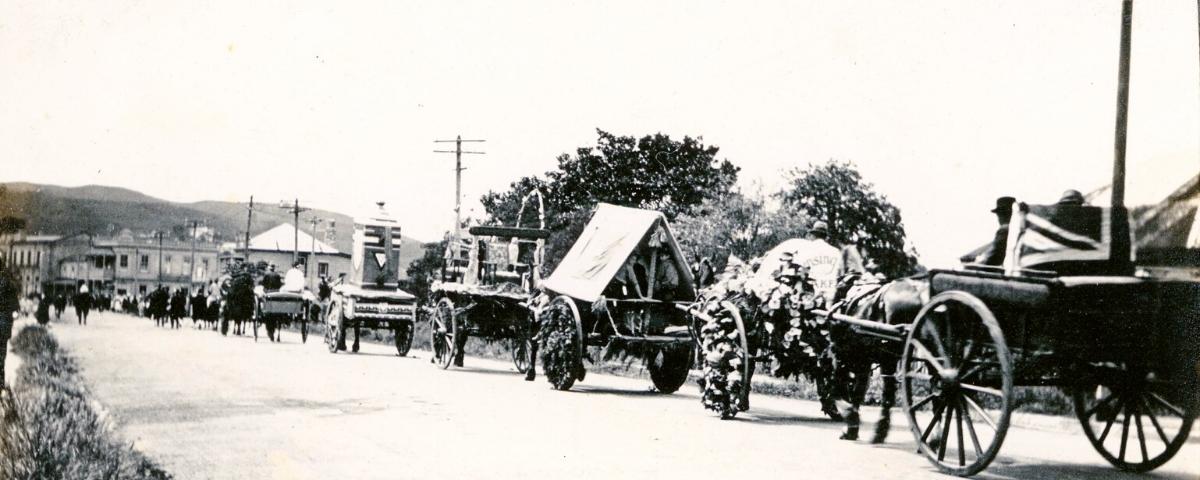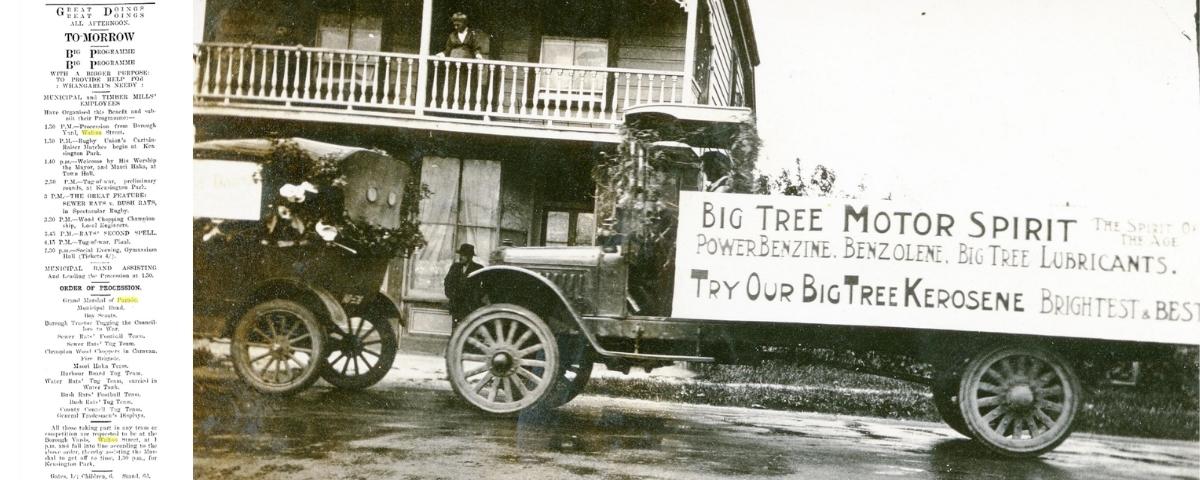Georgia Kerby, Exhibitions Curator
At Whangārei Museum we never know what the public will bring through the door. Last year we were fortunate to receive a donation from Mr. I. Mison of a series of photographs of town in the early 1920s, likely belonging to a relation, Bessie Shoebridge. Specifically the photographs record a 1922 charity parade along tidy clay streets around town central, including Walton and Bank Streets.
An advertisement in the Northern advocate states “Municipal and Timber Mills Employees have organised this benefit and submit this programme:…to provide help to Whangarei’s needy”. The day’s plan included a procession from the Borough Yard, Walton Street, rugby matches, Mayor’s welcome and a haka at the Town Hall, tug of war, wood chopping and a social evening.
The parade itself (pictured) featured a ban and vehicles transporting the boy scouts, councilors, Sewer Rats, Bush Rats and Water Rats sports teams, champion wood choppers, Fire Brigade, haka team, Harbour Board members, County Council members and local businesses.
Their various floats are dressed up in splendor and are more impressive that what our parades achieve nowadays, covered in palm fronds, flowers, large hand painted signs, flags and people in costume. An odd group, the Water Rats (sports team) are dressed up in a cart with King Neptune carrying his trident at the fore, all pulled by a muscular farm horse. My favourite is a mule pulled cart topped with a giant three-dimensional teapot advertising Unity Tea. What is likely to be the haka group are sitting on a waka several meters long mounted on a cart, the girls wearing headbands and sashes and the boys wearing piupiu. Of course, one of Whangārei’s earliest transport companies, Hardie Bros., provided a vehicle to pull this float.
One of the best views captured in these photographs is looking north up Walton Street with the bare hills of Parihaka in the background. The Hardie Bros. and haka team trail behind an early motor car stuffed full of fauna in front of the Harding Army Hall, which remains there today. At this time, Walton Street was one of the major streets in town connecting the railway to ships at the town basin.
Mobil advertise their Laurel Kerosene with stacks of crates on a large truck and another American petrol company, Big Tree, have an unmissable sign attached to a truck, advertising their ‘motor spirit’ for cars and ‘kerosene’ for domestic lighting. Their Whangārei depot can be seen in the photograph of Walton Street, run by agent Skipper Paterson, who was a friend of the Shoebridge family. A tiny cottage which belonged to a member of the Shoebridge family stands between their warehouse and the Army Hall. This series, captured on a personal camera, are a remarkable record of a small-scale local event, showing interesting views of some of Whangārei’s main streets in the 1920s.


